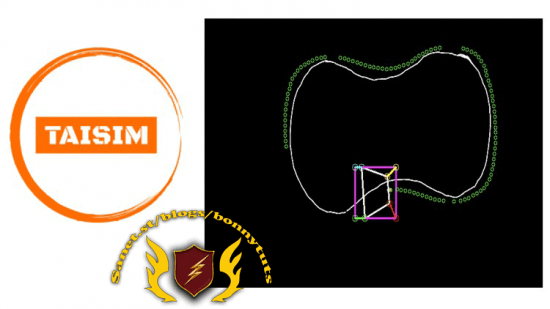
Published 6/2023
Created by Tucu AI
MP4 | Video: h264, 1280×720 | Audio: AAC, 44.1 KHz, 2 Ch
Genre: eLearning | Language: English | Duration: 8 Lectures ( 52m ) | Size: 573 MB
Robot Simulation
What you’ll learn
Understanding TAISIM Robot Customisation
Understanding TAISIM SensorBar
Understanding TAISIM HelpBar
Understanding TAISIM Enviournment
Understanding TAISIM virtual sensors
Understanding TAISIM robot control
Requirements
Visual Studio Code
Python3.x
Description
The “Simple Way to Simulate Robots in Python” course is designed for students and robotics enthusiasts who are interested in learning how to simulate robots using the TAISIM simulator. TAISIM is a cross-platform, user-friendly simulator that provides a simple and accessible environment for simulating robot behavior and interactions.In this course, you will be introduced to the fundamentals of robot simulation and learn how to use TAISIM to create and control virtual robots. Starting with the basics of Python programming, you will gain a solid foundation before diving into the simulation aspects. The course assumes no prior knowledge of robot simulation or programming, making it suitable for beginners.Additionally, the TAISIM simulator supports a diverse set of virtual sensors to provide a comprehensive perception experience within the simulated environment. The following virtual sensors are available:Camera Sensor: Simulates the visual perception capabilities of a robot by capturing images and providing pixel-level information about the surroundings. This sensor allows for tasks such as object detection, recognition, and tracking.Lidar Sensor: Simulates laser-based rangefinders commonly used in robotics for mapping, localization, and obstacle detection. It provides distance measurements in the form of a point cloud, enabling 3D perception.Compass Sensor: Simulates a compass, which provides the robot with information about its orientation with respect to the Earth’s magnetic field. This sensor aids in navigation and heading control.GPS Sensor: Simulates a Global Positioning System (GPS) receiver, allowing the robot to determine its position and velocity on a global scale. This sensor is particularly useful for outdoor robotics applications and navigation.With the availability of these virtual sensors in TAISIM, students and robotics enthusiasts can explore a wide range of perception-related tasks and develop algorithms that leverage sensor data for decision-making and control. The combination of camera, Lidar, compass, and GPS sensors provides a rich environment for simulating various real-world robotics scenarios and fosters a deeper understanding of robot perception and localization.By the end of this course, you will have gained the knowledge and skills to effectively simulate robots using the TAISIM simulator. You will be able to create, control, and analyze virtual robot behaviors, enabling you to experiment and develop your understanding of robotics in a simulated environment.Note: This course primarily focuses on the simulation aspect of robotics and does not cover physical robot construction or hardware integration.
Who this course is for
Anyone interested in robotics
Anyone intersted in Advanced Driving Systems
Anyone interested in simulators
Anyone interested in Simulators , Lidars, Compass and GPS
Anyone interested in Autonomous Driving
Anyone interested in Computer Vision and Big Data
Password/解压密码www.tbtos.com